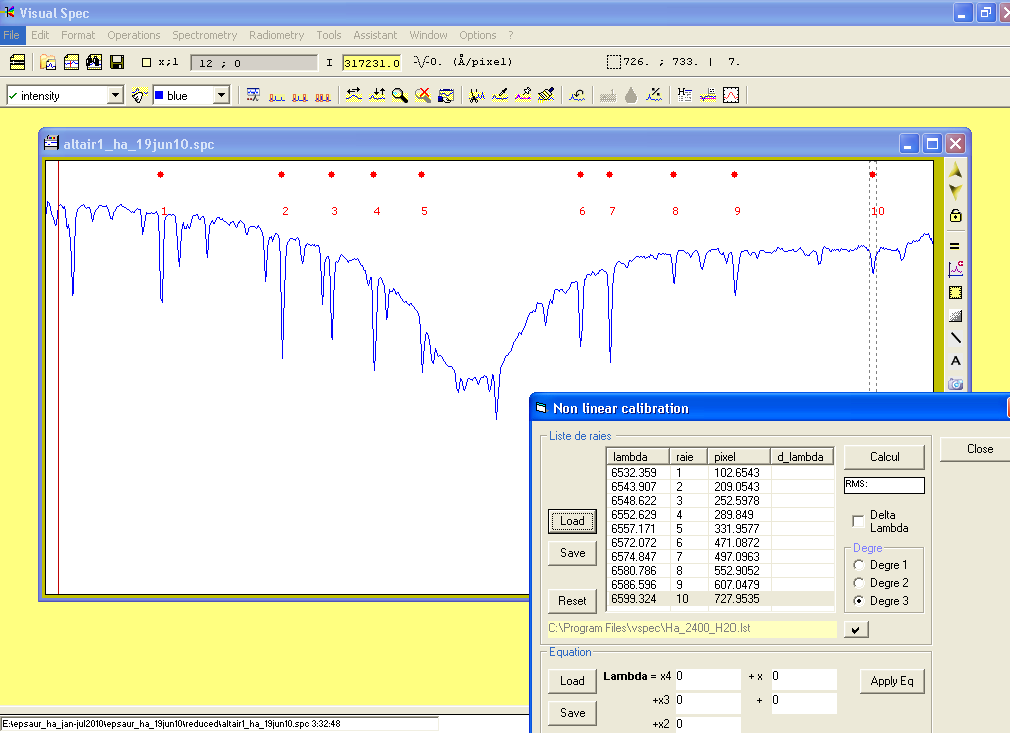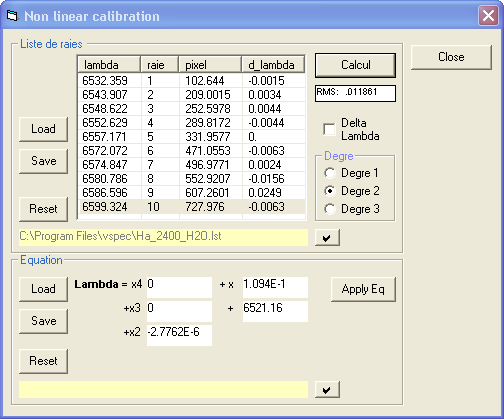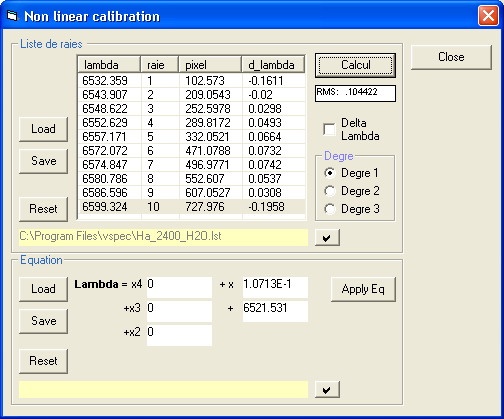
SPECTROSCOPY
RETURN TO SPECTROSCOPY INTRODUCTION
LHIRES III - Calibrating high resolution H alpha spectra using telluric lines
If a small size CCD is used with the LHIRES III at H alpha at high resolution only 2 strong neon calibration lines are visible in the field. Using these, only a linear calibration can be done which gives unacceptable errors in calibation of typically +-0.1A or more.
(Note that by increasing the neon exposure, two more weak neon lines can be seen between the two strong ones which can potentially be used to do a non linear calibration. See this link for more details )
Water vapour in the atmosphere however produces many absorption lines at accurately known wavelengths in the H alpha region which are superimposed on the star spectrum. If visible, these can be used to produce a more accurate non linear calibration and can often give a more accurate calibration even if many neon lines are visible as they are not affected by mechanical shifts sometimes seen with the neon calibration.

This example of Altair shows the 10 lines I have successfully used. For the best calibration accuracy, chose strong lines evenly distributed across the field. Note as with any non linear calibration, it should not be trusted beyond the outermost calibration lines.

This gave a 2nd order calibration with an RMS residual error of only 0.012A

A linear fit has almost 10x larger error
Even if the atmosphere is normally too dry to show the telluric lines well, a spectrum can be taken on a wet night (a bright star close to the horizon will show the telluric lines more clearly) This can be used to calculate the non linear calibration equation. This equation can then be used with a single neon line to non linearly calibrate spectra even where the tellurics are not visible.
Note: Even if there are enough neon lines to do a non linear calibration, the telluric lines can be used as a calibration check and if for example the neon calibation has shifted slightly due to mechanical flexing of the spectrograph for example, the spectrum can be shifted slightly to bring the tellurics into line.